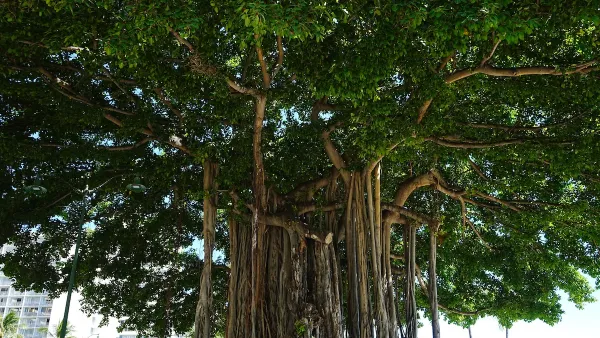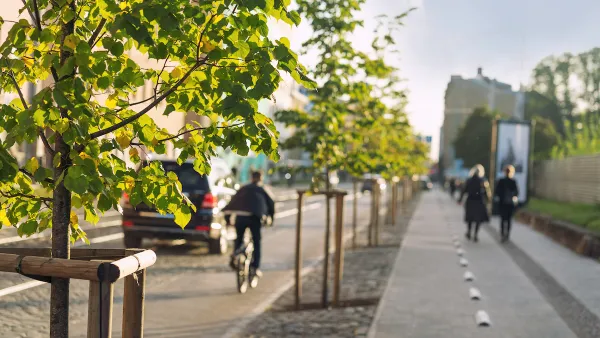Sarah Laskow reports on recent research on the surprisingly two-way connection between the happiness of urban trees and the happiness of urban humans.

Sarah Laskow begins an article for Next City by describing the work of Mark Taylor, a public health researcher at the University of Trnava in Slovakia. Taylor and his colleagues "collected data on two variables: the density of street trees and the number of antidepressant prescriptions in London’s 33 boroughs." The methodology made it possible to draw a "connection between nature and mental health without relying on people’s own accounts of their well-being."
The study, published in the Landscape and Urban Planning Journal, found that "even after adjusting for factors like unemployment and affluence, the areas that have the most trees along the streets also had fewer prescriptions for antidepressants."
Laskow also describes the research of Jess Vogt, a visiting assistant professor at Furman University, in South Carolina, whose research examines the following question: "How can people help street trees thrive — and vice versa?" Vogt examined 35 projects, in 25 Indianapolis neighborhoods. "They documented whether 1,345 trees had lived or died and looked more closely at 616 trees, to see how they’d grown." Vogt's findings suggest that the trees' quality of life "wasn’t just influenced by its immediate surroundings, but by the people they interacted with."
FULL STORY: How Trees Can Make City People Happier (and Vice Versa)

National Parks Layoffs Will Cause Communities to Lose Billions
Thousands of essential park workers were laid off this week, just before the busy spring break season.

Retro-silient?: America’s First “Eco-burb,” The Woodlands Turns 50
A master-planned community north of Houston offers lessons on green infrastructure and resilient design, but falls short of its founder’s lofty affordability and walkability goals.

Delivering for America Plan Will Downgrade Mail Service in at Least 49.5 Percent of Zip Codes
Republican and Democrat lawmakers criticize the plan for its disproportionate negative impact on rural communities.

Test News Post 1
This is a summary

Test News Headline 46
Test for the image on the front page.

Balancing Bombs and Butterflies: How the National Guard Protects a Rare Species
The National Guard at Fort Indiantown Gap uses GIS technology and land management strategies to balance military training with conservation efforts, ensuring the survival of the rare eastern regal fritillary butterfly.
Urban Design for Planners 1: Software Tools
This six-course series explores essential urban design concepts using open source software and equips planners with the tools they need to participate fully in the urban design process.
Planning for Universal Design
Learn the tools for implementing Universal Design in planning regulations.
EMC Planning Group, Inc.
Planetizen
Planetizen
Mpact (formerly Rail~Volution)
Great Falls Development Authority, Inc.
HUDs Office of Policy Development and Research
NYU Wagner Graduate School of Public Service





























